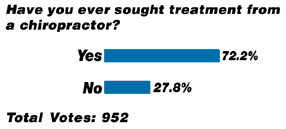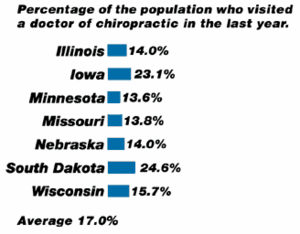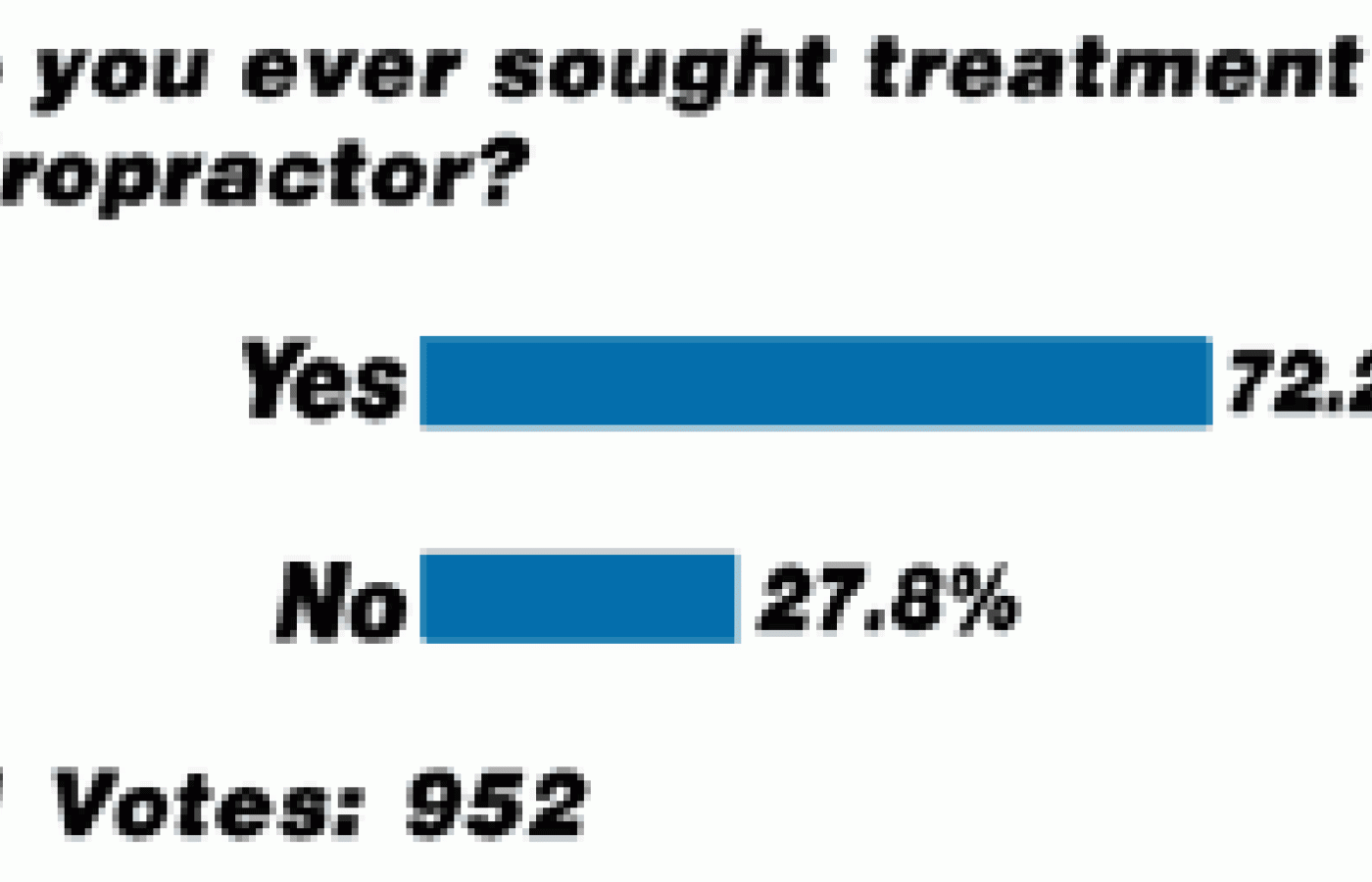Some doctors thrive in a personality-based clinic and have a loyal following no matter what services or equipment they offer, but for most chiropractic offices who are trying to grow and expand, new equipment purchases help us stay relevant and continue to service our client base in the best, most up-to-date manner possible. So, regarding equipment purchasing: should you lease, get a bank loan, or pay cash?
Missed Opportunity
On September 16, 1999, the USA Today website asked: "Have you EVER sought treatment from a chiropractor?" On September 30, 1999 the results were released:

While we can't extrapolate these results to a broader population base, they do provide an interesting contrast to the findings of Drs. Hawk and Long:1

We know that a certain percentage of the population has received chiropractic care sometime in their life. Is it 72%? For the sake of discussion, let's take the USA Today figure.
Now, let's define an active chiropractic patient as a patient who has been treated by a DC within the last year. While this is not my definition, nor probably yours, let's accept that definition for discussion purposes.
Comparing the number of people who have ever seen a DC with the number of active chiropractic patients in each of the above states should cause you some concern. Using the average number of chiropractic patients (17%), the results of these two surveys would suggest that over 55% of the people in the United States choose NOT to use chiropractic on a regular basis after they tried it (72.2% - 17.0% = 55.2%).
This can probably be considered a pain vs. wellness issue, as well as an educational issue. Another way to look at this is that 55% consider chiropractic care episodic, while only 17% understand the wellness benefits of chiropractic.
How did this happen?
From a business point of view, it isn't hard to see we have a marketing problem. Our profession is stymied if it can only appeal to 17% of its potential market.
Most organizations invest millions of dollars to motivate potential customers to use their services or products. The belief, or motto, becomes, "Once a customer, always a customer." On sheer determination, chiropractic appears to have interacted with approximately 72% of the market but only converted 17%.
Now your own self-examination:
• How much money do you spend annually advertising for new patients?
• How much money (and time) do you spend annually educating new and existing patients?
If your annual advertising budget is a lot larger than your annual patient education budget, you are wasting your money. Why spend so much to get patients if you aren't going to spend the time and money to keep them?
It takes a lot of money to get patients, but less to keep them. And, as we all know, a well-educated patient is the BEST referral source.
If you're looking for a way to build your practice, build it from within. Go back through your own list of people who have been to your office in the last two years. Pull out the ones you haven't seen for the last six months and start there.
Also begin to educate your existing patients before they become former patients. Develop an aggressive program that involves your entire staff. Educate them over at least the first six visits so that they are thinking about wellness by the time they're no longer in pain. Don't let 76% of the people you care for become nonchiropractic patients.
Reference
1. Hawk C, Long CR. Factors affecting use of chiropractic services in seven Midwestern states in the United States. J Public Health 1999;15:233-239.



